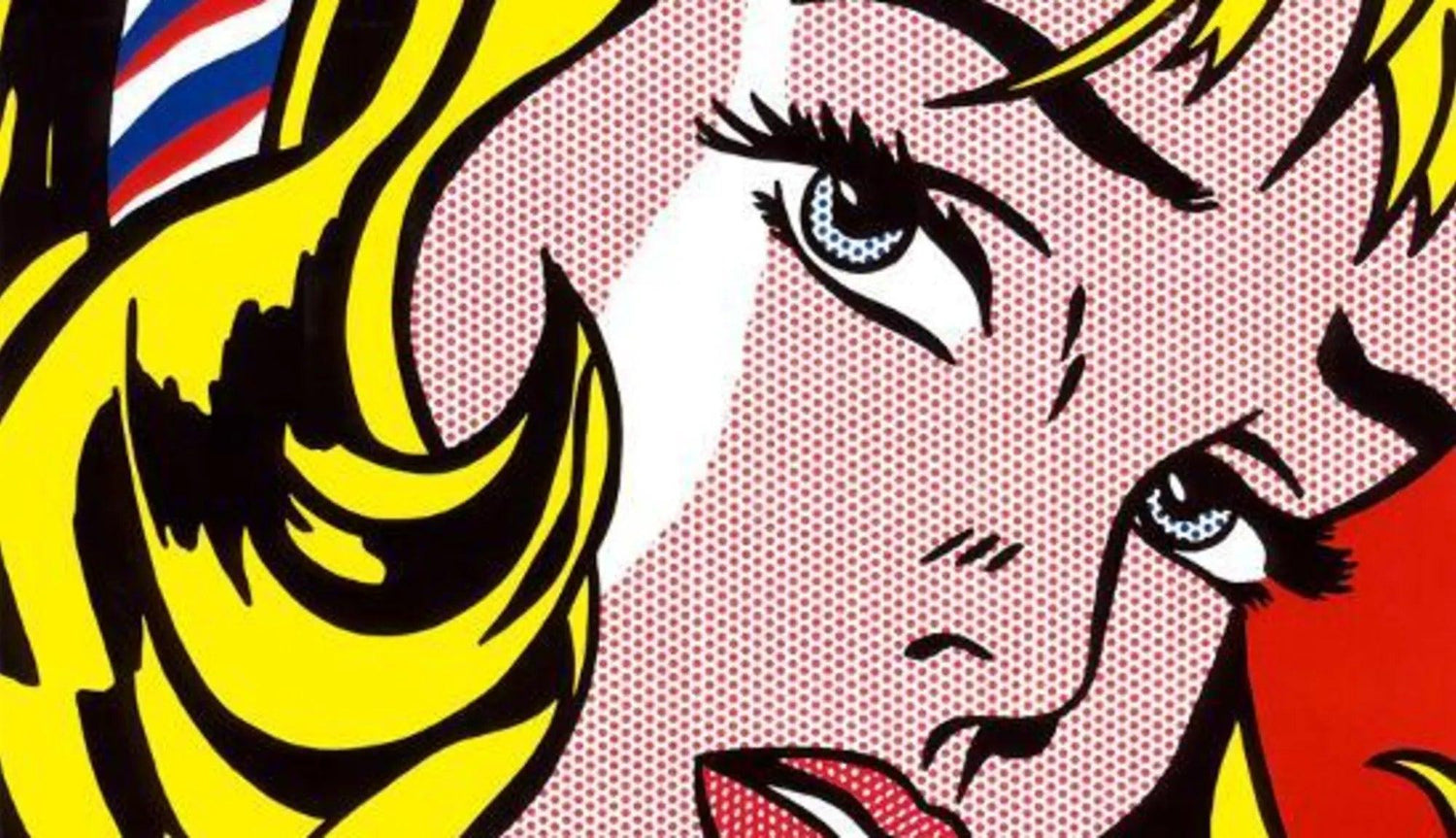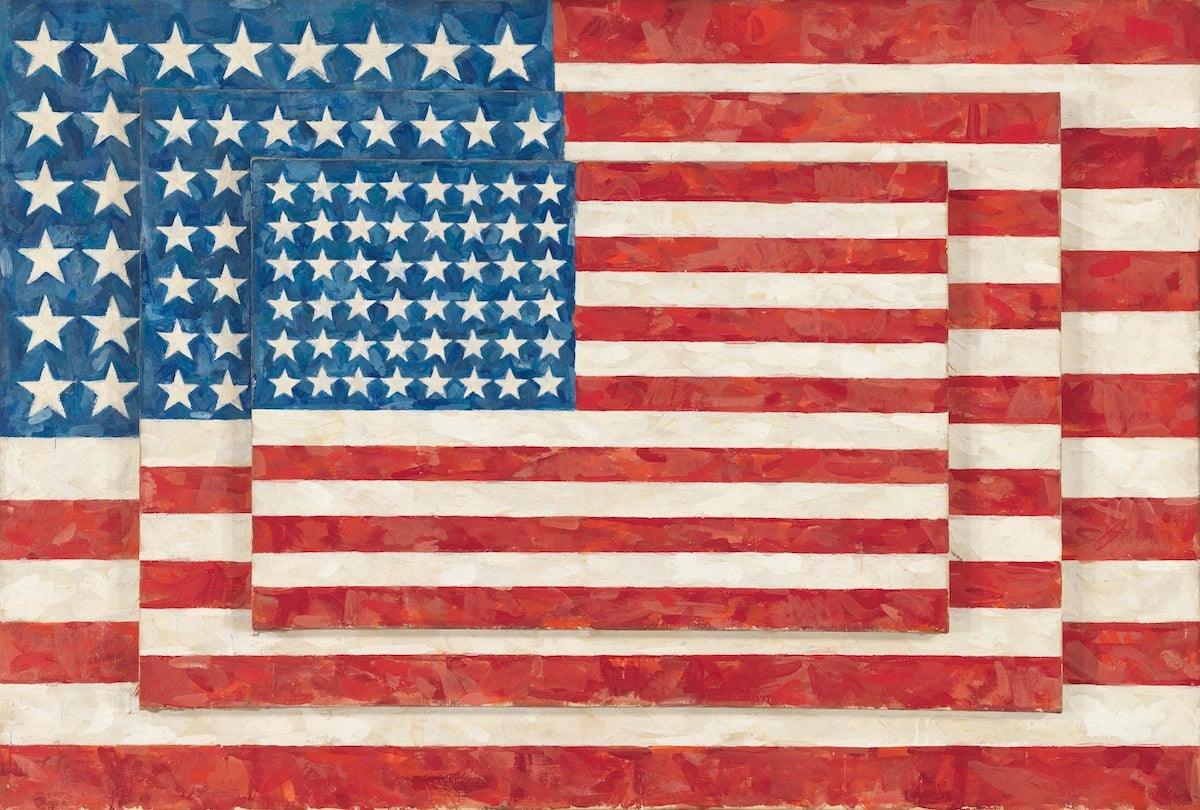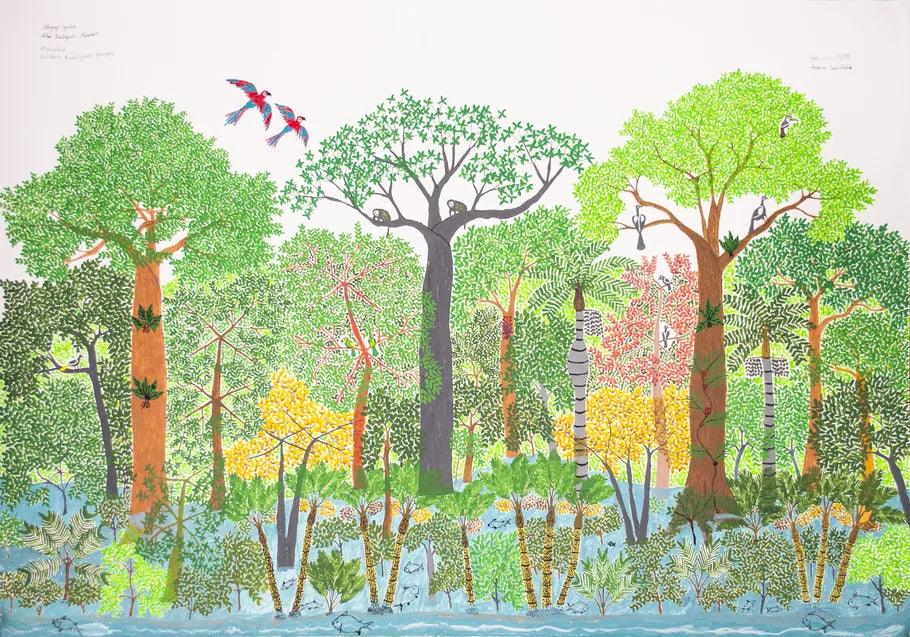
Roy Lichtenstein (1923–1997), a prominent American artist, played a crucial role in shaping the Pop Art movement with his distinctive comic book-inspired creations. Born in New York City, Lichtenstein studied both commercial and fine art, later using his skills to challenge conventional art by fusing it with elements of popular culture. His groundbreaking works, such as "Whaam!" and "Drowning Girl," emerged during the 1960s, marking a significant turning point in the evolution of Pop Art.
Lichtenstein's innovative approach incorporated Ben Day dots and bold primary colors, evoking a sense of nostalgia in viewers. Although initially criticized as derivative, his work gradually gained recognition in museums and galleries, eventually earning him a place alongside other Pop Art icons like Andy Warhol.
Even after his passing over two decades ago, Lichtenstein's influence continues to resonate in the art world, inspiring contemporary artists and exhibitions worldwide.

Roy Lichtenstein and the Comic Book Connection
Comic books have long been a driving force in modern culture, inspiring artists across various disciplines. Salvador Dali, Banksy, and other renowned creators have drawn upon comic book themes and visuals in their work. However, few artists embraced this inspiration as consistently and passionately as Roy Lichtenstein.
Throughout his career, Lichtenstein delved into the aesthetics and techniques of 1940s and 1950s American comic strips. By enlarging and replicating these visuals, he managed to preserve their original details and nuances while simultaneously transforming them into unique works of art. Lichtenstein's innovative approach to utilizing Ben-Day dots and other printing techniques became a defining feature of his oeuvre, contributing to the development of Pop Art.
Lichtenstein's comic book-inspired creations not only imitated existing images but also reimagined them in new and inventive ways. By drawing attention to the often-overlooked artistry of mass media prints, Lichtenstein's work elevated everyday visual elements to new heights, captivating viewers with their bold, familiar designs.
The Vivid Color Schemes in Lichtenstein's Art

One of the most striking aspects of Roy Lichtenstein's work is his use of color. As a leading figure in Pop Art, Lichtenstein frequently employed bright, vibrant hues that generated visual tension and drew attention to the subject matter. His choice of colors often carried symbolic meanings, adding depth and complexity to his creations.
Lichtenstein's most frequently used colors were the primary shades of red, blue, and yellow. Red symbolized intensity and passion, as seen in works like "Yellow and Red Brushstroke" (1999). Blue, often associated with tranquility and introspection, appeared in serene compositions such as "Nude Sunbathing" (1969). Green played a prominent role in war-themed pieces like "Whaam!" (1963), while pink challenged gender norms in works like "Blonde Waiting" (1962).

Aside from primary colors, Lichtenstein also experimented with more intricate palettes. In "Still Life with Goldfish" (1973), he combined red and blue to create striking purple accents. This interplay of colors underscored the fluidity and coexistence of opposing elements, a theme that resonates throughout Lichtenstein's body of work.
Roy Lichtenstein's Impact on Pop Art Narratives

Pop art paintings serve as both a celebration of popular culture and a commentary on contemporary societal issues. Artists like Andy Warhol used the medium to critique consumer culture and explore the transient nature of fame. By incorporating everyday objects and images, Warhol redefined artistic expression and encouraged viewers to engage with his commentary on the artificiality of modern life.
Similarly, Roy Lichtenstein's work questioned the superficiality of popular culture and the role of mass-produced images in art. Through his iconic dot paintings, Lichtenstein challenged conventional notions of artistic expression and invited viewers to reconsider the value of everyday visuals. His influence on the narrative of Pop Art was immense, opening up new possibilities for artists working within the movement.
Lichtenstein's Evolving Artistic Style

Roy Lichtenstein's art underwent significant transformations over the course of his career. While his early works were characterized by thick black outlines and Ben-Day dots, he later experimented with different media, including sculpture, prints, and painted reliefs.
In the 1960s, Lichtenstein's Pop Art creations featured exaggerated word bubbles, familiar characters, and background objects that hinted at a deeper narrative. As his style evolved, he began to simplify and abstract his subjects, focusing more on patterns and color relationships.
By the 1970s, Lichtenstein's work had shifted toward abstraction, with large-scale pieces that prioritized optical properties over subject matter. This transition marked a significant departure from his earlier figurative work, culminating in a unique color field aesthetic that remains influential today.
Lichtenstein's Lasting Legacy in Contemporary Art

Roy Lichtenstein's contributions to Pop Art continue to shape contemporary art, as artists today incorporate playful imagery, vibrant colors, and primary shapes reminiscent of his signature style. Many contemporary painters draw inspiration from Lichtenstein's innovative techniques, such as layering dots or stripes to create the illusion of movement.
These artists combine elements of popular culture with traditional fine art, building upon Lichtenstein's groundbreaking approach to visual expression. By challenging conventional notions of what constitutes art, Lichtenstein's influence endures, reminding us of the ever-evolving nature of culture and creativity.
In conclusion, Roy Lichtenstein's vibrant and innovative work continues to captivate and inspire, ensuring his legacy will endure for generations to come. As a pioneer in Pop Art, Lichtenstein's unique fusion of comic book imagery and bold colors has left an indelible mark on the art world, demonstrating the transformative power of artistic exploration and reimagining the boundaries of creative expression.







Leave a comment
All comments are moderated before being published.
This site is protected by hCaptcha and the hCaptcha Privacy Policy and Terms of Service apply.